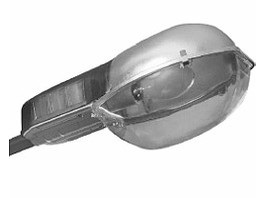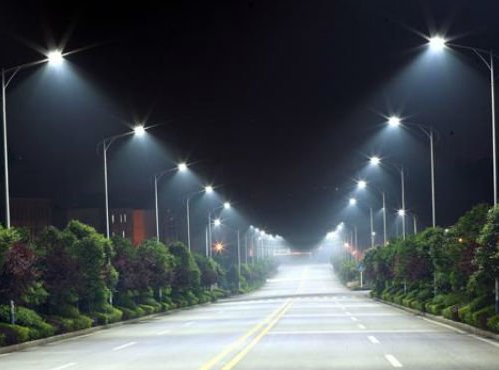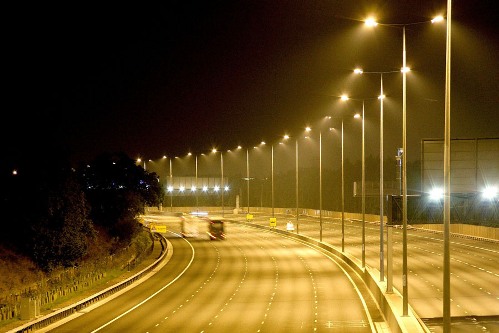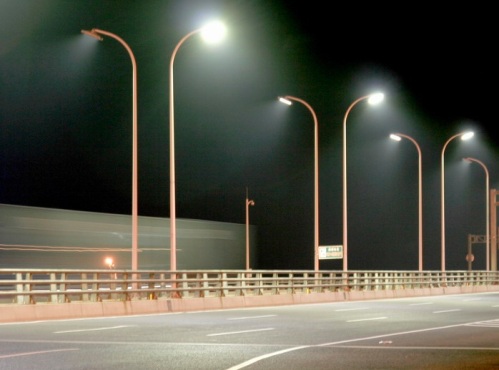Categories: Featured Articles » Sources of light
Number of views: 39651
Comments on the article: 3
What lamps are currently used in street lighting
 For street lighting in settlements, energy-efficient luminaires with sealed reflectors are now used. On highways and major freeways, reflex lighting is often used with a reflective surface inside the luminaire, which allows the creation of powerful streams of directional light. For secondary roads, reflex and diffused lighting are equally suitable.
For street lighting in settlements, energy-efficient luminaires with sealed reflectors are now used. On highways and major freeways, reflex lighting is often used with a reflective surface inside the luminaire, which allows the creation of powerful streams of directional light. For secondary roads, reflex and diffused lighting are equally suitable.
The most powerful lanterns, with power from 250 to 400 W, are installed on freeways, less powerful ones are used to illuminate secondary roads - 70 - 250 W, and scattered lighting with lamp power from 40 to 125 W is sufficient for pedestrian sidewalks and park areas. Street lighting fixtures in settlements have shades of various shapes: for parks, these are balls and cylinders, for wide streets - directional floodlights, etc.

Lamps in these lighting devices are mainly gas-discharge of various kinds. It is gas-discharge lamps that are considered the most energy-efficient and therefore are economically viable. Gas discharge lamps have become a kind of standard for street lighting.
Despite the flickering of light and the noise of their ballasts, the economic effect of the use of gas discharge lamps is very expressive, which is why they are the standard until now. At the same time, the light of gas discharge lamps is quite bright and stable throughout their entire service life. Color can be different - from yellow to white.
The lamps are relatively compact, create intense light beams by means of a discharge arc, while the working position can be any - from horizontal to vertical - this is one of the advantages of gas discharge lamps used for street lighting.
Gas discharge lamps have their own characteristics. They need warming up before reaching full power. Be sure to have a protective glass on the lamp. Of course, an incendiary block with so-called ballast is also needed. Necessarily install current fuses. The use of ballasts allows avoiding malfunctions due to power surges.
Despite all these features, gas discharge lamps still do not lose relevance. So, discharge lamps are used for street lighting, for lighting areas, highways, tunnels, airfields, etc. In fairness, we note that discharge lamps also occupied a worthy place in decorative lighting, for example, for making artistic lighting of buildings.
The advantages of gas discharge lamps include: stable, even light throughout the entire service life, high energy efficiency and low operating costs, long service life compared to incandescent lamps and with halogen lamps, as well as the presence of protection from the ultraviolet part of the spectrum. So, mercury DRL, sodium DNAT and metal halide DRI are gas discharge lamps and are used today most often in street lighting.
DRL - mercury arc lamps of high pressure, DRI - mercury arc metal halide lamps, as well as DNAT - gas discharge sodium lamps of high and low pressure - all these lamps operate on the principle of gas discharge in mercury vapor or sodium, which serves as a light source. Mercury lamps are used more than others, but gradually they are replaced by sodium lamps, which are more environmentally friendly.
DRL lamps have high color rendering quality, are reliable and do not require maintenance. Inside are mercury vapor under a pressure of up to 105 Pa. The glass cylinder with a cap contains a mercury-quartz tube located inside, inside of which are argon and mercury.An electric discharge in vapors creates light radiation, with 40% being ultraviolet.
The phosphor, which covers the inside of the bulb lamp, allows you to convert ultraviolet light into visible light. Open areas are traditionally lit by DRL lamps. The light output of DRL lamps reaches 60 lumens per watt.

DRI lamps also belong to gas discharge. Mercury and various additives such as bromides and iodides can achieve high light output, which reaches 95 lumens per watt and above. Metal halide lamps have excellent color reproduction. Smooth white light with different color temperatures is about metal halide lamps.
A cylindrical or ellipsoidal bulb inside has a torch as in mercury arc lamps, only here the discharge occurs in pairs of metals and iodides. The service life of a metal halide lamp reaches 10,000 hours.
The different composition of the mixtures filling the flask allows to obtain different color temperatures and even different from white, for example green or purple, which is important in order to emphasize the architectural component of the street.
Street lighting, lighting of large commercial facilities - these are areas of frequent use of metal halide lamps, the power of which can reach 250 watts, with the commensurability of illumination with a 1 kW floodlight. Metal halide lamps are more expensive than high pressure mercury arc (DRL).

Lamps DNAT - sodium tubular lampsare distinguished by a bright orange light characteristic of a gas discharge in sodium vapor. Sodium lamps as well as metal halide replace mercury lamps. Sodium - one of the most energy-efficient lamps, they have the highest light output among gas-discharge lamps - up to 200 lumens per watt.
The disadvantage of sodium lamps is that they shine worse in the cold season, and high-pressure sodium lamps contain sodium and mercury compounds inside, so the environmental aspect is not so clear.
NLND low pressure sodium lamps and NLVD high pressure sodium lamps are different. NLND low-pressure lamps are 30% better in light output than high-pressure lamps, and they are most often used in street lighting in warm regions, they are just perfect because their even yellow color is comfortable for the human eye, although the color rendering is not close enough to natural.
NLVD high pressure lamps are characterized by high efficiency, but are inferior, as noted above, in light output to low pressure lamps. Therefore, high-pressure lamps are more suitable for gyms, industrial complexes and all that sort of thing. Maximum light output 130-150 lumens per watt. However, their light is also comfortable for the human eye, and the use of various phosphors allows you to change the color rendition toward closer to natural, like in sunlight.

In recent years, the most promising LEDs. They are comparable in terms of efficiency and light output with low-pressure sodium lamps, and the color of the light can be any. The chemical composition of a semiconducting base can be different, and by changing it you can get monochromatic light of any color and light temperature. Compared to discharge lamps, LEDs are environmentally friendly; their disposal is not as specific as for lamps containing mercury. The service life of LEDs greatly exceeds discharge lamps - up to 100,000 hours.
LED luminaires for street and road lighting work today in the USA, everywhere in China, in Europe. Mounted on lighting poles of various heights, LED lamps are used in these countries to illuminate roads outside cities.
Less powerful LED street lights are also used to illuminate city streets, courtyards and roadways of city roads.The introduction of LED lighting is one of the significant components of a modern approach to energy conservation, aimed at saving fuel and energy resources.
See also at bgv.electricianexp.com
:
